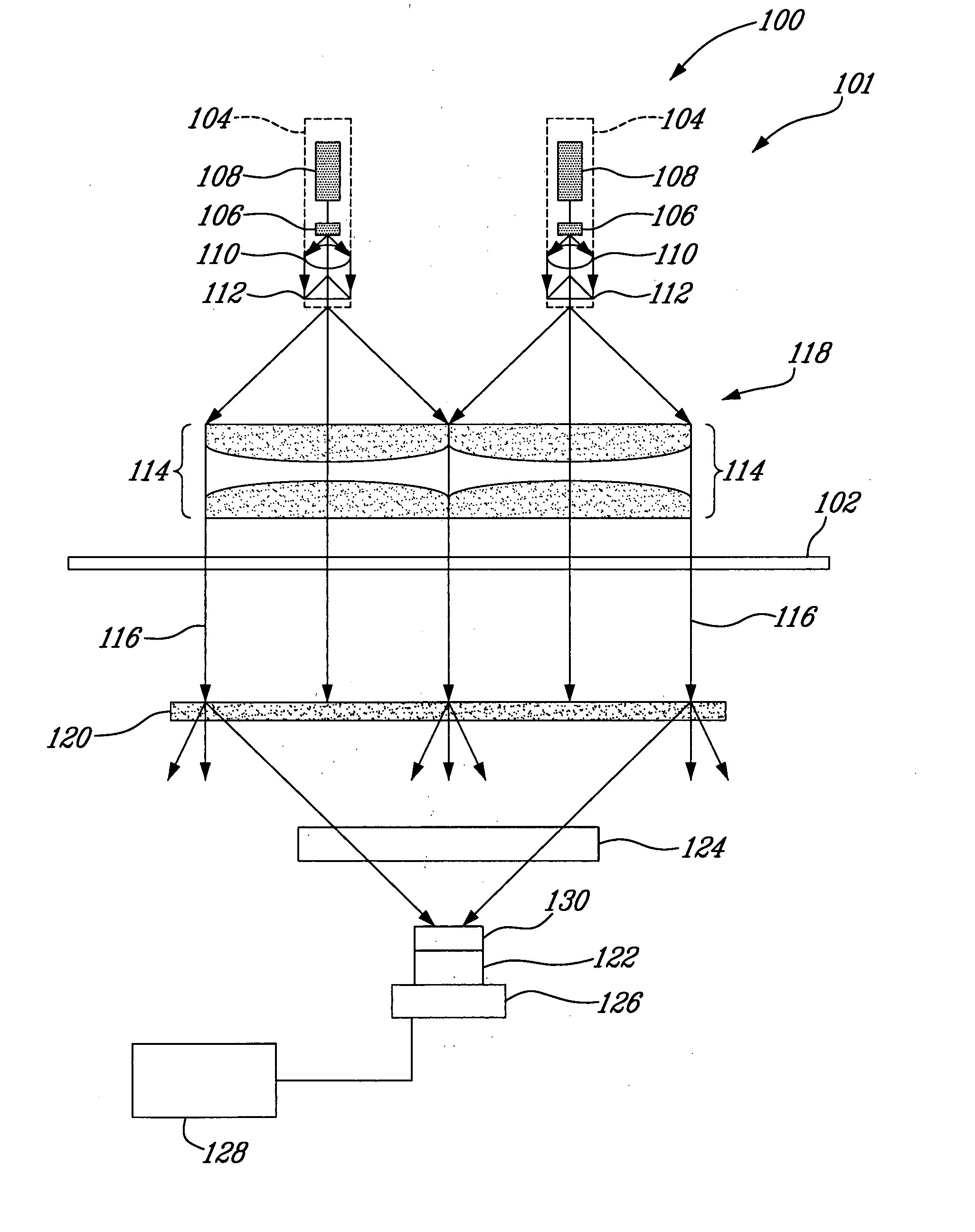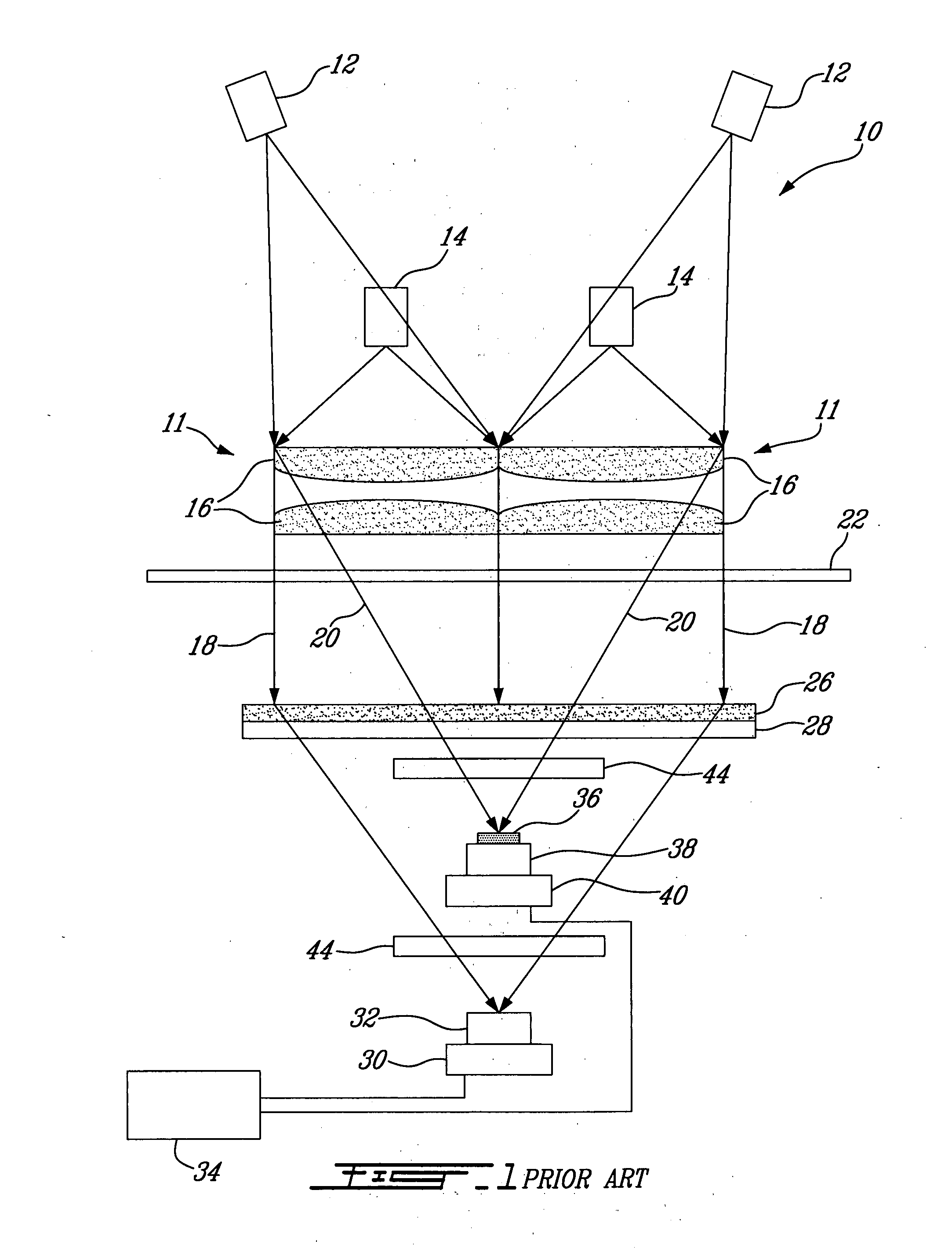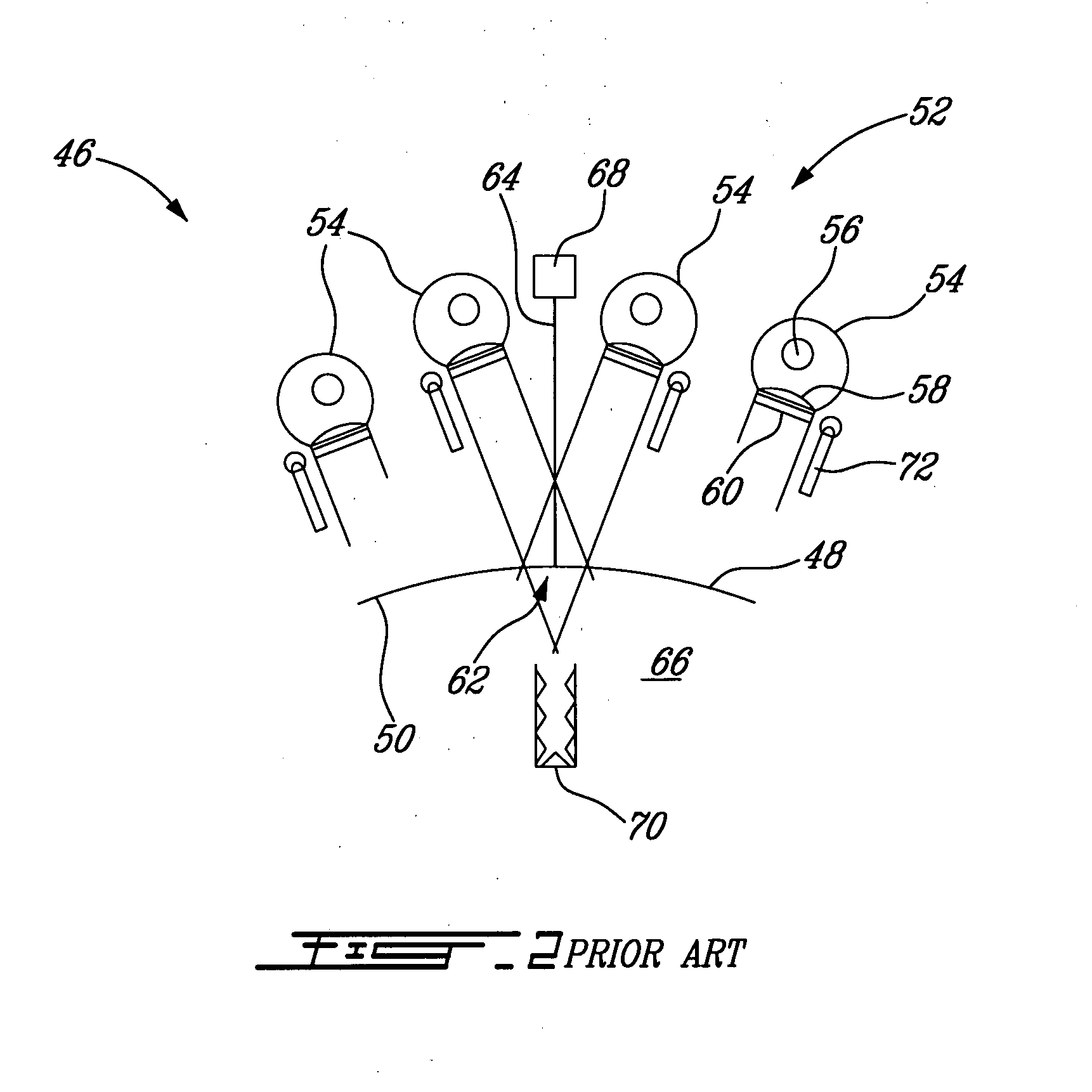Bright field and dark field channels, used for automotive glass inspection systems
a technology of automotive glass inspection and dark field, applied in the direction of instruments, electrical equipment, geological measurements, etc., can solve the problems of reducing the signal-to-noise ratio (snr), reducing the detection capability for a broad variety of defects, and narrowing down the choice of effective solutions suitable, so as to overcome or mitigate one or more disadvantages of known glass inspection
- Summary
- Abstract
- Description
- Claims
- Application Information
AI Technical Summary
Benefits of technology
Problems solved by technology
Method used
Image
Examples
Embodiment Construction
[0037]Techniques for the manufacture of glass are known. For example, glass may be converted to a molten state and then cast onto molten tin metal so that glass with a smooth surface may be obtained. Nonetheless, the glass that has been cast may be subject to a number of defects, including the presence of bubbles, dirt, stones, tin-drip distortion and other defects. Some such defects might arise from raw materials fed to the process while other defects will arise from processing problems, including incorrect temperature or other process parameters and aging of apparatus, especially of kilns or other apparatus used in the heating of the glass.
[0038]Subsequent to the casting of the glass, the glass is cut into sheets and then transferred to a manufacturer of glass articles for a particular end use. In the automobile industry, for instance, the glass articles could be windows of a vehicle, in which event the manufacturer will shape the glass to a particular size and configuration, grin...
PUM
 Login to View More
Login to View More Abstract
Description
Claims
Application Information
 Login to View More
Login to View More - R&D
- Intellectual Property
- Life Sciences
- Materials
- Tech Scout
- Unparalleled Data Quality
- Higher Quality Content
- 60% Fewer Hallucinations
Browse by: Latest US Patents, China's latest patents, Technical Efficacy Thesaurus, Application Domain, Technology Topic, Popular Technical Reports.
© 2025 PatSnap. All rights reserved.Legal|Privacy policy|Modern Slavery Act Transparency Statement|Sitemap|About US| Contact US: help@patsnap.com



